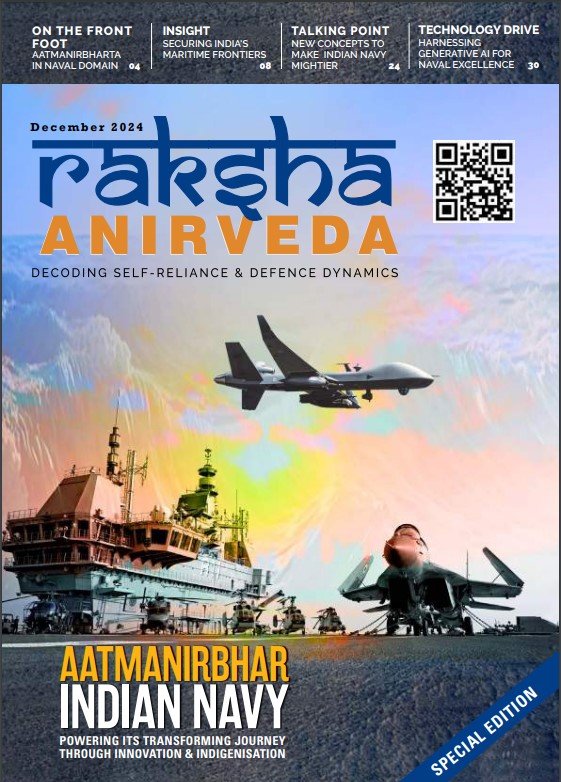Silent Hunter: The domination of strategic space in modern warfare has come to overwhelmingly being relied upon Naval Power. The country with capability of strong naval assets has invariably succeeded in power projection beyond its shore while enormously increasing its area of influence. Almost all wars in recent memory have witnessed the importance of domination of sea while land boundaries are being contested and redrawn. There are factual reasons for Navy to wield so much of combat influence. It is the only arm to have subsurface, surface and air components all within itself with an unmatched canvas of manoeuvre. Undeniably the deadliest of all is its subsurface spears – the submarines. They are not only unique to Navy but have proven to have disproportionately larger than life impact on the mega wars. The famous German U boats or undersea boats as they were called ran havoc on allied powers and registered spectacular success destroying more than 100 navy ships and blocking the sea lanes across Atlantic, Mediterranean and Caribbean.
Today the major powers are not only operating ever larger fleets of submarines but have also taken to incorporate cutting edge advancements by incorporating stealth technology, improved sonars, nuclear powered and armed with assortments of deadly weapons. It’s worth mentioning submarines have become a platform of choice for holding strategic nuclear missiles by mega powers. They have unmatched capability of stealth and reach and have become synonymous with the most reliable component of the nuclear triad for nations.
Emerging Challenges
The Indian Navy got down to business of operating submarines only in later part of the 1980s. The twin challenges of technology and budgetary resources to sustain successful naval operations are critical challenges for any nation. However, the responsibility of keeping the huge coastline of mainland and island territories spanning 7,516 km secured from hostile neighbours left the Indian Navy with no other alternative but to quickly expand its assets including submarines. The first of submarines inducted in the Navy was INS Sindhughosh in April 1986, it was a vintage Shishumar class powered by diesel electric engine with a sustenance of 45 days duration and operational range of less than 10,000 km. The 1971 war saw the Navy playing a crucial role in not only securing maritime boundaries but also maintaining its presence in the high seas deterring hostile actions. Since then to the present times has made strategic challenges multiply manifold. The emergence of a hostile China, growing importance of economic activities in territorial waters and the need to maintain freedom of navigation have proven to be the most crucial factors in naval strategic planning. To the credit of the Indian Navy it has been alive to the developing situation. It has moved to augment key assets in destroyers, aircraft carriers and also submarines. From a fleet of six submarines in the 1980s, the Navy has grown its submarine fleet three folds as on date. Since India went Nuclear in 1998 urgency was felt that a submarine based nuclear weapon delivery platform is a must. That challenge has probably been overcome with the induction of Arihant class submarines.
Extending Strategic Influence
Presently Indian Navy’s influence extends up to the horn of Africa in the Arabian Sea and parts of western Pacific, primarily keeping sea lanes secured in the Indian Ocean. It is also regarded as an important regional naval power as also a preferred operational partner by major Western powers. With the advent of new challenges and projected future requirements, India earnestly needs a force to harness its power projection into the Indian Ocean as well as deep into the Pacific Ocean. All these are critically dependent upon India’s submarine capabilities, there aren’t any questions about if but challenge is how?
A critical component that the Indian Navy earnestly needs is the augmentation of not only submarines but also its submarine force. Post Kargil war the Cabinet Committee on Security has given a go ahead to building 24 submarines over the next 30-year period to meet future national requirements. India has 16 diesel electric powered conventional submarines of Shishumar class, Sindhughosh Class and latest one being Kalvari class and one nuclear submarine. While Shishumar was built in assistance with Germany, Sindhughosh are similar to Russian Kilo class submarines; induction of both commenced way back in 1986. INS Vagir is the latest and fifth of six Kalvari class or the Scorpène-class stealth submarines to be commissioned on 23 January 2023. But the real teeth of a submarine force are the nuclear powered attack submarines simply for their sustainability, firepower and endurance. India currently operates two of four indigenously built nuclear powered Arihant class submarines under its Advance Technology Vessel programme, INS Arihant and INS Arighat as its ‘strategic strike nuclear submarines’.
Future Course
India needs more of new gen nuclear powered long endurance stealth submarines, with modern sonars & acoustic hydrophone, armed with strategic missiles while having the capability to effectively evade and execute Anti-Air, Anti-Surface and Anti-Subsurface threats. What is also required is an adequate support system in place to sustain these enlarged fleet of submarines by means of crew training, maintenance support and distress response capability. The Navy has learnt its lessons in the distress management during the shocking loss of INS Sindhurakshak in a fire accident in August 2013. As the submarines operational array increases, it would also need an equally strong logistics support management.
Indigenous capabilities are the only answers when the projected requirements are real and availability in international markets is non-existent. Successful commissioning of nuclear powered submarines has propelled India into an exclusive league of nations and the first one apart from Permanent Five with such a capability. The building of nuclear powered submarines is not only technologically complex but is an extremely costly affair. A back of the envelope cost estimation suggests it cost almost eight times more than a conventional submarine. Indian shipyards such as the state-owned MDL, HSL and Cochin Shipyard Limited as also private players like L&T Shipbuilding and Pipavav Shipyard have shown promising capabilities in building home grown destroyers, aircraft carriers and submarines. The Navy’s inhouse Submarine Design Group under the Directorate of Naval Design, assisted by the DRDO has further given the strong push to indigenous capability.
The challenge now staring the Navy is to sustain the momentum it has achieved in submarine building, continue to explore private partnership opportunities for accelerating its existing projects as also to collaborate for development of new weapon systems to effectively arm its precious possession. What will likely work in favour of Navy’s endeavour to meet its strategic submarines requirements are its more than three decades of experience, existing construction capabilities, its stated prioritisation of submarines over third aircraft carriers and continued favourable budgetary allocations. However, what the Navy needs to seriously guard against is creeping in of any complacency and strong headwinds in geo strategic environment facing the country. Both have the capacity to derail the timelines and quickly overwhelm the Navy’s focus and prioritisation. To enable the Navy to retain its focus and desired zeal it would be worth reminding themselves that a successful submarine programme could only be undertaken by very few countries till date!
-The writer has varied experience in security paradigm and is a keen follower of international geopolitics. His work has been regularly featured in national publications and newspapers. He is also the author of popular blog site newsanalytics.co.in on geo-strategic affairs
-The writer has varied experience in the security paradigm and is a keen follower of global geopolitics. His work has been regularly featured in national publications. Visit newsanalytics.in to access more articles from the author. The views expressed are of the writer and do not necessarily reflect the views of Raksha Anirveda













